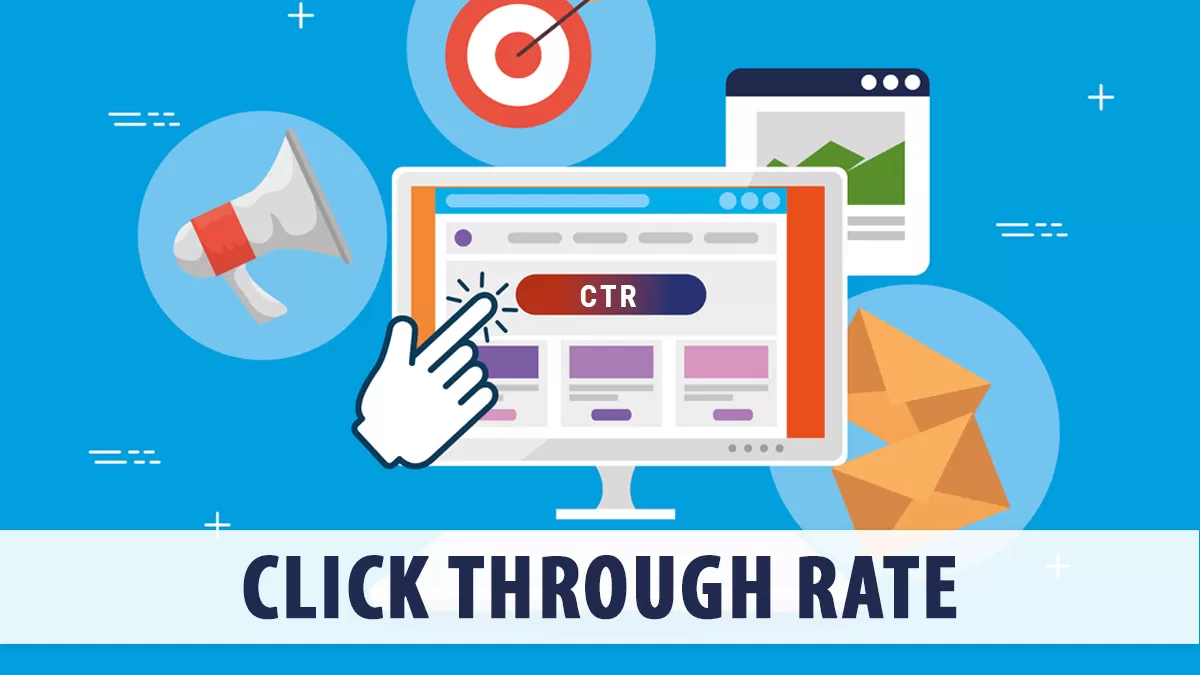Understanding Click-Through Rate (CTR): A Key Metric for Digital Marketing Success
In the digital marketing landscape, understanding your audience and how they interact with your content is crucial. One of the most important metrics to gauge this interaction is the Click-Through Rate (CTR). This blog post will explore what CTR is, how it’s calculated, why it matters, and ways to improve it.
What is Click-Through Rate (CTR)?
Click-Through Rate (CTR) is a metric that measures the percentage of users who click on a specific link, ad, or call-to-action compared to the total number of users who view that content. It provides insights into how effective your content is at encouraging user engagement.
What Is A Good CTR?
A good CTR (Click-Through Rate) can vary widely depending on several factors, including the type of campaign, industry, and platform. Generally, here are some benchmarks:
1. Display Ads: A typical CTR ranges from 0.5% to 1.5%.
2. Search Ads: A good CTR is usually around 2% to 5%, with top-performing ads exceeding this.
3. Email Marketing: A good CTR often falls between 1% and 5%, depending on the industry.
Ultimately, the “good” CTR for your specific situation should be determined by your goals, previous performance, and industry standards. Monitoring and optimizing your CTR over time is key to improving engagement and achieving better results. Would you like to dive deeper into specific industries or strategies for improvement?
How to Calculate CTR
The formula to calculate CTR is simple:

Why CTR is Important
1. Performance Indicator: CTR serves as a clear indicator of how well your content resonates with your audience. A high CTR suggests that your headlines, visuals, and overall messaging are effective.
2. Cost Efficiency: In pay-per-click (PPC) advertising, a higher CTR can lead to lower costs per click and improved ad placement. Platforms like Google Ads reward high-performing ads with better positions and lower costs.
3. Conversion Potential: A higher CTR can lead to increased traffic, which in turn can result in more conversions, sales, or leads. Understanding and optimizing your CTR can significantly impact your overall marketing success.
4. User Engagement Insights: Analyzing CTR can help you understand what type of content attracts more clicks, allowing you to tailor your future campaigns more effectively.
How CTR Impacts Ad Rank
CTR significantly impacts ad rank in platforms like Google Ads. A higher CTR indicates that users find your ad relevant and engaging, which can improve your ad position and lower your cost-per-click (CPC). Ad rank is calculated based on your bid amount, ad quality (which includes CTR), and other factors. Therefore, better CTR can lead to higher visibility on search results pages, resulting in more clicks and conversions. Would you like to delve into strategies to improve your CTR for better ad rank?
How CTR Impacts Quality Score
CTR (Click-Through Rate) plays a crucial role in determining your Quality Score in platforms like Google Ads. Quality Score is a rating that Google assigns based on the relevance and quality of your ads, keywords, and landing pages. Here’s how CTR impacts it:
1. Direct Influence: A higher CTR indicates that your ad is relevant to users’ searches. Google rewards ads with high CTR by assigning a better Quality Score.
2. Ad Relevance: Since CTR reflects how compelling your ad is, it serves as a proxy for ad relevance. Ads that consistently attract clicks are seen as more relevant, contributing positively to your Quality Score.
3. Lower Costs: A higher Quality Score often results in lower costs per click (CPC) and better ad placements, creating a positive feedback loop: better placement can lead to even higher CTR.
4. Overall Performance: Quality Score affects your ad rank, which determines your position on search results pages. A good CTR helps improve your ad’s position, which can further enhance visibility and clicks.
To optimize your Quality Score, focus on improving your CTR through compelling ad copy, relevant keywords, and effective targeting. Would you like tips on specific strategies to enhance your CTR?
Factors Affecting CTR
Several factors can influence your CTR, including:
– Ad Copy and Headlines: Compelling and clear headlines are crucial for grabbing attention. Experiment with different styles to see what resonates with your audience.
– Target Audience: Ensure that your ads or content are targeted to the right audience. Misaligned targeting can lead to lower engagement rates.
– Visual Elements: Eye-catching images or videos can significantly enhance CTR. Visuals should complement the message and attract viewers.
– Placement: Where your ads or content appear can affect click rates. Ads placed in more prominent positions typically receive higher CTRs.
Tips to Improve Your CTR
1. Optimize Your Headlines: Use action-oriented language and address the needs or interests of your audience.
2. A/B Testing: Experiment with different versions of your ads or content to see which performs better. A/B testing can provide valuable insights into what works.
3. Use Clear Calls to Action (CTAs): Ensure your CTAs are prominent and convey a sense of urgency or benefit. Phrases like “Sign Up Now” or “Get Your Free Trial” can encourage clicks.
4. Segment Your Audience: Tailor your messages for different audience segments to increase relevance and engagement.
5. Monitor and Adjust: Regularly review your CTR data and make adjustments based on performance. Continuous optimization is key to maintaining high engagement rates.
When A Low CTR Is OK
A low CTR can be acceptable in certain situations, such as:
1. Brand Awareness Campaigns: If your goal is to increase brand visibility rather than immediate clicks, a lower CTR may still be effective.
2. Highly Targeted Ads: If your ads are reaching a niche audience, lower clicks might be expected, especially if the content is highly relevant but not widely appealing.
3. Retargeting Campaigns: Users may be less likely to click if they’ve seen the ad multiple times. Here, engagement metrics beyond CTR, like conversion rate, become more important.
4. High-Value Offers: If your product or service has a long consideration cycle (like cars or real estate), a low CTR may be acceptable if the clicks you do get convert well.
Understanding your specific campaign goals will help determine if a low CTR is justifiable. Would you like to explore how to optimize campaigns with low CTRs?
Conclusion
Click-through rate is a vital metric that provides insights into the effectiveness of your digital marketing efforts. By understanding and optimizing CTR, you can enhance user engagement, drive more traffic, and ultimately achieve better conversion rates. Whether you’re running an ad campaign or sending out newsletters, keeping an eye on CTR can help you make informed decisions that lead to marketing success.
By focusing on improving your CTR, you can create more effective strategies that resonate with your audience and drive your business forward.




